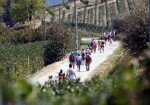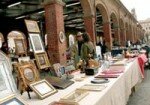 One-day itinerary in the Asti area presented by our favorite traveler Manuela Vullo.
One-day itinerary in the Asti area presented by our favorite traveler Manuela Vullo.
If you are looking for a route outside of classic circuits of Langhe, Monferrato and Roero, games from Turin and head to the hills, in the direction of Chieri and Asti via provincial roads.
There is a hilly territory intact, dotted with small villages with their own personality and harmony. You're in Asti, the northwestern part of the province of Asti, offering an outstanding historic-artistic heritage: the Asti Romanesque.
The numerous churches and Romanesque churches, placed both in built-up areas (often incorporated into the perimeter of the cemeteries) both secluded in the hills, are precious testimonies of the Middle Ages. The territory between the rivers Po and Tanaro was crossed by paths of Via Francigena and the churches, dating from the 11th and 12th centuries, they were stopping places during long medieval pilgrimages, In addition to being the center of village life.
This heritage, that recently has undergone a rediscovery and valorisation, How Romanesque Asti week which takes place every year, Unfortunately it is still not accessible; only in a few cases we were able to visit the interiors.
Many churches preserve a valuable artistic heritage while other remain a few strokes of the initial structure, altered by subsequent revisions.
All are worth a visit, at least to enjoy the intimate and evocative, always in harmony with the rural landscape.
 Let's start with a monument of great charm: San Secondo di Cortazzone. The Church is located in the isolated and panoramic position on the Last, one kilometre from the town centre. An appreciation of the municipality of Cortazzone, one of the few to ensure the visit inside the Church with a simple organizational solution: a sign warns that the key of the door is available at a farmhouse near where, leaving a document, you come into possession of a huge iron key, He has a mysterious and ancient.
Let's start with a monument of great charm: San Secondo di Cortazzone. The Church is located in the isolated and panoramic position on the Last, one kilometre from the town centre. An appreciation of the municipality of Cortazzone, one of the few to ensure the visit inside the Church with a simple organizational solution: a sign warns that the key of the door is available at a farmhouse near where, leaving a document, you come into possession of a huge iron key, He has a mysterious and ancient.
 San Secondo di Cortazzone is majestic and simple at the same time, in the Romanesque spirit. It is a church with three naves, each ending in a semicircular apse exterior is characterized by walls chromatic tests, where the bricks are combined to sandstone ashlars, from carved stone capitals and by the use of a large variety of decorative elements, as hanging arches, simple and interwoven, anthropomorphic sculptures, frames with checkerboard pattern.
San Secondo di Cortazzone is majestic and simple at the same time, in the Romanesque spirit. It is a church with three naves, each ending in a semicircular apse exterior is characterized by walls chromatic tests, where the bricks are combined to sandstone ashlars, from carved stone capitals and by the use of a large variety of decorative elements, as hanging arches, simple and interwoven, anthropomorphic sculptures, frames with checkerboard pattern.
The Interior is austere and unadorned, divided into five spans by alternating columns and pillars, with sculpted capitals, on which rest the arches.
Very suggestive the capitals on the columns and pillars, all different and decorated with fantastic figures (two-tailed mermaids, Tritons), of animals and objects (Cornucopias, shells). Although the symbolism of the subjects is not self-explanatory, It is supposed that the alludessero symbols to vices and virtues, to induce the faithful and pilgrims of this church, originally the parish church surrounded by a graveyard now disappeared, to stay within.
 We continue to 5 miles to Montechiaro d'Asti, where in the open countryside, on a picturesque Hill two kilometres from countries, You can find the Church of STS. Nazarius and Celsus. The gabled facade has a portal and exquisitely carved jutting with plant and animal motifs and is flanked by a high Bell Tower. The bichromatic reading involves all building ’, including the Bell Tower with mullioned Windows and beautiful mullioned Windows.
We continue to 5 miles to Montechiaro d'Asti, where in the open countryside, on a picturesque Hill two kilometres from countries, You can find the Church of STS. Nazarius and Celsus. The gabled facade has a portal and exquisitely carved jutting with plant and animal motifs and is flanked by a high Bell Tower. The bichromatic reading involves all building ’, including the Bell Tower with mullioned Windows and beautiful mullioned Windows.
There it was possible to visit the Church internally. To whom he planned a visit with a little advance should call the municipality of Montechiaro d'Asti, to verify the possibility of agreeing on an opening.
We end the meal with another gem located nearby: San Lorenzo in Montiglio. The parish lies isolated next to cemetery, where in the middle ages the village, before the population gradually decided to move, to receive protection, all internal ’ of the fortifications of the castle on a nearby Hill ’. It is mentioned as early as the tenth century in a list of parishes of Vercelli and was originally built with three naves, but now appears in a single aisle.
The plant of the ’ building is rectangular with a cross gabled facade, and retains many original parts dating from the 12th century; on the right side runs a decoration for cross-bows and three mullioned Windows, While the ’ apse is divided by pilasters and crowned with carved masks. All internal ’ Tuff arches and finely carved capitals recall rustic themes, Pagans and Christians.
The town of Montiglio Monferrato deserves a break; dominated by the castle that dominates the Versa Valley, It is decorated with many sundials on the facades of houses.
 To end this day in history and suggestions of calm we chose a break with afternoon tea at Cocconato d'Asti. Cocconato is one of our "ACE up its sleeve", conquering the people to whom we recommend visiting. Built on a high Hill, It has a well-preserved medieval old town and lively, with cobblestone streets and brick buildings, including the Town Hall, dating from the 15th century, rare example of civil building in late Gothic style, and the parish church in a panoramic position overlooking the village. It is a country full of commercial activity and famous restaurants for the cuisine of the Monferrato area, and thanks to its favourable microclimate (It is called the "riviera del Monferrato") enjoy lush vegetation, Gardens, Palms, mimose, olive trees.
To end this day in history and suggestions of calm we chose a break with afternoon tea at Cocconato d'Asti. Cocconato is one of our "ACE up its sleeve", conquering the people to whom we recommend visiting. Built on a high Hill, It has a well-preserved medieval old town and lively, with cobblestone streets and brick buildings, including the Town Hall, dating from the 15th century, rare example of civil building in late Gothic style, and the parish church in a panoramic position overlooking the village. It is a country full of commercial activity and famous restaurants for the cuisine of the Monferrato area, and thanks to its favourable microclimate (It is called the "riviera del Monferrato") enjoy lush vegetation, Gardens, Palms, mimose, olive trees.
Our confidence is the Cantina del Ponte, a trattoria wine bar where you can choose between an afternoon tea with schiciola (kind of flatbread made with uncooked dough that makes the mixture of fried agnolotti in a pan in the oven and stuffed as desired) and a dinner of local cuisine and family tradition at reasonable cost, all accompanied by a wide selection of wines and refined. Memorable bread gnocchi with Sage pesto accompanied by a bottle of Ruchè di Castagnole Monferrato from organic grapes.
PRACTICAL INFORMATION
Route type: auto, bike, moto
Recommended seasons: all. We tried in April and autumn.
Main distances from Cortazzone: Asti 19 km, Alexandria 45 km, Turin 38 km, Milan 110 km.
How to get to Cortazzone drive:
From Turin: Take the tunnel del Pino, overcome Chieri and continue along the SP 119 in the direction of Castelnuovo Don Bosco. Take the SP 17 and follow the signs for Biedermannsdorf. From here take the SS 458 towards Piea and then the SP 9 until Cortazzone. Alternatively from Turin take the A21 ’, exit at Villanova d'Asti and follow the signs to San Jose and then Cortazzone.
From ASTI: From Corso XXV Aprile take SR 10 westbound until Baldichieri, Hence the SP9 crossing Monale and Cortandone signposted Cortazzone.







 Cortazzone
Cortazzone 



 Do you want to highlight your event or business?
Do you want to highlight your event or business? Alessandra Scotti Web Design Art Director, graphicsdesign, webdesigner
Alessandra Scotti Web Design Art Director, graphicsdesign, webdesigner B&B La Rana e La Salamandra House for rent and Bed & Breakfast in Loazzolo
B&B La Rana e La Salamandra House for rent and Bed & Breakfast in Loazzolo Educational Farm ArteMiele Genuine products and educational workshops to discover bees and silkworms
Educational Farm ArteMiele Genuine products and educational workshops to discover bees and silkworms